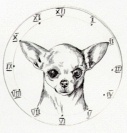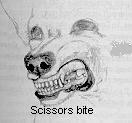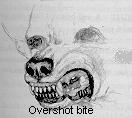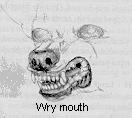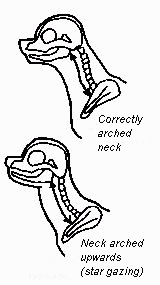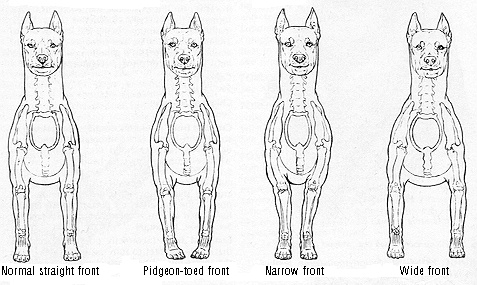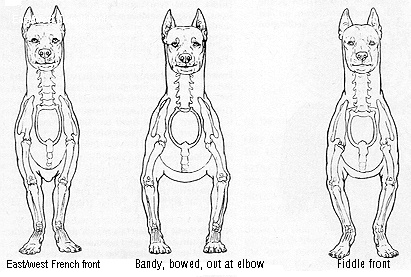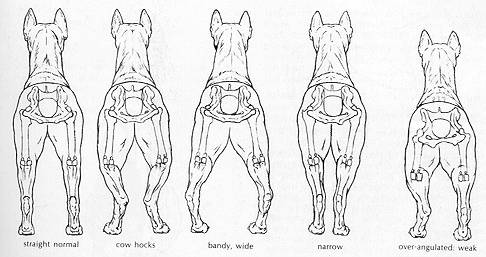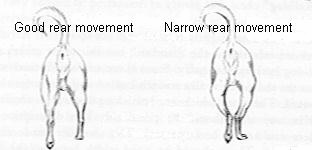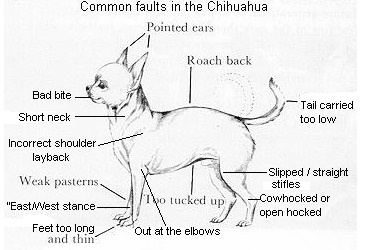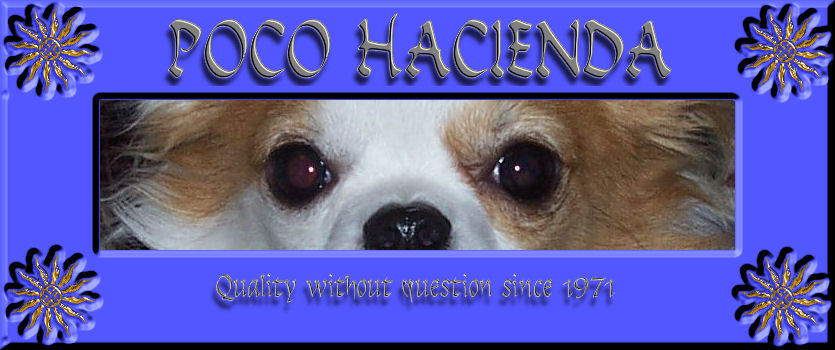 |














































A breed standard is a worded description of the ideal dog of a certain breed in an attempt to describe the perfect model for breeders use to breed better dogs. Dog show judges use the standard as a guide to evaluate dogs. Each dog is judged by their standard that describes the perfect dog to the judge.
(This page takes a while to load...there are lots of graphics!!)

Some of the illustrations provided here are by Mr. Lawrence Fitt-Savage and some are from "Canine Terminology" by Harold Spira. The information on this page is provided for nonprofit educational/informational purposes only.
The standard is interpreted in many different ways. A larger breed comparison would be the GOLDEN RETRIEVER.
CLICK ON THE TOPIC YOU WANT TO READ ABOUT BELOW: [TYPE AND SOUNDNESS] [GENERAL APPEARANCE] [WEIGHT]
[PROPORTION] [HEAD] [EYES, NOSE & EXPRESSION]
[EARS] [BITE] [NECK & WITHERS] [SHOULDERS & FOREQUARTERS]
[TOPLINE] [RIBS] [FOOT & PASTERNS] [TAIL] [HINDQUARTERS]
[COAT] [GAIT] [TEMPERAMENT] [DISQUALIFICATIONS]
TYPE AND SOUNDNESS - The two terms are defined as follows:TYPE is the combination of distinguishing features that give each bread its individuality. SOUNDNESS is the state of mental and physical health when all organs and faculties are complete and functioning normally, each in its rightful relation to the other. Chihuahua breed type is defined by the standard. You must think outside the box to understand the factors beneath the surface appearance and study how body parts fit and work together. Type and soundness go hand in hand and the standard not only refers to the head but stresses equal importance to head, body, legs and gait. It does not suggest that the head should be emphasized any more than any other part of the dog yet a great many see a pretty face and classify that dog as "typey", regardless of what the rest of the dog looks like.
Back to index
GENERAL APPEARANCE - A graceful, alert, swift-moving little dog with saucy expression, compact, and with terrier-like qualities. The Chihuahua is a unique breed and is admired for many reasons and is not easily defined.
Back to index
WEIGHT - A well-balanced little dog not to exceed 6 pounds. It USED to say that if two dogs were of equal quality, the diminutive was preferred. I'm glad they took that out, because although the tiny ones can be nice, as far as furthering the breed, they come to a deadend as they usually cannot be bred. Many judges feel the Chihuahua is "getting too large" - my only comment to that is they ought to try breeding them for awhile.
Back to index
PROPORTION -The body is off-square, slightly longer when measured from point of shoulder to point of buttocks, than height at the withers. Somewhat shorter bodies are preferred in males.
Back to index
THE HEAD -
The Chihuahua's pronounced stop, round head, large eyes and ears sets this breed apart from other breeds. There are many interpretations of "typey." The standard calls for an "apple dome", but this can be confusing. It does not refer to an overexaggerated ballooned, hydrocephalic head! Most of us can agree on a round head and wedge-shaped muzzle with large ears set on at a 45 degree angle. The extent of "how much" differs.
I prefer a muzzle measuring from tip of nose to stop to be 1/3 of the measurement from the tip of the nose to occiput, but it can be nice to 1/4 that length. The muzzle should taper from the stop to the tip horizontally and vertically. The stop should form a 90 degree (or slightly over) angle with the muzzle and with a flat plane between the eyes. The stop should be no more than 1/2 the distance from the mandible bones to the top of the skull. The height of the skull should also be equal to the width of the head between the zygomatic arches, making the head as deep as it is wide.
The standard calls for lean cheeks and jaws with a moderately short nose, not a Pekinese nose. An extreme head can be a fashionable head - and fashion is subject to change by a breeder or the popularity of a current winning dog. An overly extreme head can cause loss of or problems with dentition due to the shortness and chiseling of the muzzle. There is simply not enough room for teeth! Many of our bite problems are due to trying to breed too-extreme heads.
In downsizing, all the parts do not magically uniformly decrease and maintain the same relation to the other parts. The upper and lower jaws do not reduce in size at the same rate - they are inherited independently and you can end up with badly over/undershot mouths. Teeth do not reduce in size as fast as the jaws, and the result is dogs with crooked or overlapped teeth.
Back to index
THE EYES, NOSE AND EXPRESSION -
Large eyes are preferable with no bulginess or sunkenness, well separated and set in line with the stop. Eyes should appear soft, "melting", sympathetic and/or alert. The total expression should be alert, inquisitive, friendly and/or "saucy". The eyes may be any color, luminous dark or luminous ruby, as long as they seem to fit the dog.
Color of the nose depends on the pigment color of the dog, although you will see some light colored dogs with black or blue nose leather and eyelid pigment and some have "butterfly" nose pigment. Any color is acceptable, whether solid, marked or splashed and no pigment color or marking should spoil an otherwise good dog.
Back to index
THE EARS - At rest, the ears flare at a 45 degree angle, laying back in submission, are very mobile, but should never be tipped forward. From the base of the ear to the tip, the measurement should equal the distance from the stop to the occiput. The tips of the longcoat's ears should be free of long hanging fringe (as in the Papillon), and the fringe should gradually increase in length and thickness as it merges with the coat on the ruff.
Back to index
THE BITE - Scissors or level bite. Undershot, overshot bite or any distortion of the bite or jaw, should be penalized as a serious fault. A correct scissors bite is when the top incisors just overlap in front of the bottom teeth, and the bottom canine tooth nests in front of the top canine tooth. When the incisors meet edge to edge, this is a "level" bite. The incisors should be uniform in size with 6 on top and 6 on the bottom. Some dogs with shorter noses may only have 4 bottom incisors.
(Bite illustrations by Nancy Shonbeck) Back to index
THE NECK AND WITHERS - I prefer the withers area over the shoulder blade to be just a trifle higher than the back. This provides for a slightly crested neck. The neck should have a slight crest and have length enough to be elegant - not pig-like that lacks mobility as well as nobility. If the neck is too long, the dog appears off balance and "racy". An arched neck is required for strength and carries the head forward - not up (star gazing). If the arch of the neck is not correct, the dog's movement will be choppy without reach and drive. Measured from the base of the skull to the shoulder, the neck should be approximately 1/3 the length of the back. (Illustrations by Laurence Fitt-Savage)
The withers should slope back into a short, strong, level back which shows no roachiness or lack of rib.
Back to index
THE SHOULDERS AND FOREQUARTERS - The shoulder blade should be "well laid back" at a 45 degree angle.
This means that a shoulder blade that can swing in a pendulum motion is fulfilling "free play at the elbow". A shoulder at an angle greater than 45 degrees shortens the shoulder blade, shortens the muscles anchored to it and reduces their efficiency. There is a loss of reach as the foreleg cannot straighten beyond the angle of the shoulder which reduces drive and is the root of a number of serious gaiting faults (see "GAIT" below). (Illustrations by Laurence Fitt-Savage).
The humerus should be no longer than the shoulder blade and form a 90 degree angle to the ridge of the scapula. If the elbow is on a level with the sternum, placing the forearm joint below the widest part of the ribs, the swing is uninterrupted for a smooth, non-tiring, effortless, ground-covering stride. This correct positioning puts the elbows in line with the point of shoulder and produces the least stress in gaiting. The forequarters propel and absorb the impact of each stride, ensure travel in a straight line, assist in maintaining stability of the center of gravity and carry weight. Faults in forequarter assembly can therefore have serious consequences.
The forearm should supply the height the dog needs to meet the standard. Forelegs straight (with tight elbows) that are set well under and stand parallel to each other when reviewed from all directions. Shoulders, forelegs and chest to show strength and balance with plenty of depth of brisket (to the elbows).
Back to index
THE TOPLINE - The topline from the withers to the base of the tail should be straight. The standard states "slightly longer than high". My ideal is slightly more square than described in the standard. If you measure the body length from the point of the shoulder to the pin bone of the hip, the standard's formula of "slightly longer than high" is set.
Back to index
THE RIBS - The ribs should be well sprung with a deep brisket, easing back to a full flank, with short loins. The ribs should spring out in their initial curve away from the spine, but then flatten and lengthen slightly to deepen the chest, the length of rib and depth of chest increases heart and lung room. If slabsided with little or no spring of rib from the spine and flat sides to the ribcage, room is restricted. Rounded "barrel ribs" offer an illusion of room, but adequate depth of brisket could only be obtained with a disproportionately large ribcage. Depth of brisket should be measured through the tip of the sternum, nor merely between the forelegs.(Illustrations by Laurence Fitt-Savage).
Back to index
THE FOOT AND PASTERNS - A small, dainty foot with toes well split up but not spread or flat,
pads cushioned. Neither the hare nor the cat foot.
�
I prefer a tight foot in between the hare and cat foot and I grind nails as far back as I can. In longcoats, excessive foot hair should be trimmed between pads and and the foot shaped. Dewclaws should always be removed from rear legs and dewclaw removal on front legs is up to you.
Pasterns fine.
The pastern should be about 1/4 the length from floor to elbow and should descend from the knee in only a slight forward angle (no more than 20 degrees to the pads of the foot). The line of the leg should descend vertically from the elbow to the tarsal bones in front and preferrably in the rear. A "plumb line" could be dropped from the quarters through the hock to the pastern, or the line from hock to the pastern may have a slight amount of "set" to it; that is, the foot may be slightly (20 degrees or more) under the body. The opposite effect weakens the joint.(Illustrations by Laurence Fitt-Savage).
Back to index
THE TAIL - Moderately long, carried sickle either up or out, or in a loop over the back, with tip just touching the back (never tucked between legs). Preferred furry on smoothcoats; full and long, as a plume on longcoats. The tail completes the body's structure and the tail bones are a direct continuation of the spinal column, becoming progressively smaller and tapering to the rear. The tail set should be fairly high to allow the tail to be carried up and over the back. A low set is likely to accompany a "goose rump"
with a steep croup and movement problems. If the tail is set too high laying across the back like a Pom's, the pelvis is likely to be laid too flat, with resultant short, stilted hind action. A twist or kink in the tail is a fault that may be more serious than it appears, since unnatural twists in the tail vertebrae may be symptomatic of further weaknesses along the spinal column. The curly "pig tail"
and the long tail twisted to one side, may be the result of muscular imbalance and may also signal further weaknesses in muscular development. The typical Chihuahua tail
�
is the result of a slight flattening of the vertebrae combined with strong muscles, modifications which slightly reduce tail length. A long, round, bony, "rat" tail is a deviation from type. (Tailset pictures by Jack Phariss)
Back to index
THE HINDQUARTERS - Rears should be muscular, well angulated thighs with hocks well apart, neither out nor in, well let down, firm and sturdy. The feet are as in front. Patellar luxation is a very serious fault and should be penalized.(Illustrations by Laurence Fitt-Savage).
�
�
If the hindquarters are better angulated than the front, the dog's front legs hit the ground before the hindlegs have completed their forward push and the resultant strain may cause the dog to break down at the pasterns.
Back to index
THE COAT - In smooth coats, the coat should be of soft texture, close and glossy. Heavier coats with undercoats permissible. Coat placed well over body with ruff on neck preferred, and more scantily on head and ears. Hair on tail preferred furry.
In long coats, the coat should be of a soft texture, either flat or slightly curly, with undercoat preferred tail full and long (like a plume), feathering on legs, pants on the hind legs and large ruff on the neck. (Please note: there is no such thing as a 'rough' coat! There is no such thing as a 'wire haired' coat either! Chihuahuas DO NOT have long hair on their muzzles and head! If so, they are mixed with some other long coated breed.)
Back to index
THE GAIT - The Chihuahua should move swiftly with a firm, sturdy action, with good reach in front equal to the drive from the rear. Viewed from the front, the forelegs should be straight from point of shoulder to the pad. The faster the dog moves, the greater the tendency to place the feet nor the center line of gravity beneath the body. This is not a fault - it prevents the body from rolling, which would be tiresome. The speed the Chihuahua is normally gaited at in the show ring should not require "single-tracking". The opposite of single tracking is when "tied in" elbows are restricted in their movement and as a result, the legs are thrown wide which rocks the dog from side to side. Other movement problems are paddling, winging and weaving or crossing over. (Illustrations by Laurence Fitt-Savage)
From the rear, the hocks remain parallel to each other, and the foot fall of the rear legs follows directly behind that of the forelegs. The legs, both front and rear, will tend to converge slightly toward a central line of gravity as speed increases.
The side view shows good, strong drive in the rear and plenty of reach in the front, with head carried high with the bottom of the muzzle even with or above the topline. The topline should remain firm and the backline level as the dog moves. The picture below of one of Dick Dickerson's dogs is a good example of good movement:
Back to index
THE TEMPERAMENT - Alert with terrier-like qualities. The Chihuahua should be without fear, playful, exciting, vivacious, gentle and loving.
Back to index
DISQUALIFICATIONS - Any dog over 6 pounds in weight, broken down or cropped ears, cropped tail, or bobtail. In longcoats, too thin coat that resembles bareness.
It has taken a long time for Chihuahuas to be deemed worthy of group placements at all breed shows, much less Best In Shows, and it is only through continued insistence on soundness that Chihuahuas will be serious contenders to all breed judges.
Back to index















































Click the graphic below to join
Chihuahua_Fanciers@yahoogroups.com -
the first and only listgroup
of its kind founded in 1998
specifically for those who show and breed Chihuahuas:
























The reproduction and/or use of any personal content or graphics on any page of this website
is strictly prohibited and protected under copyright law. ALL legal rights reserved.

